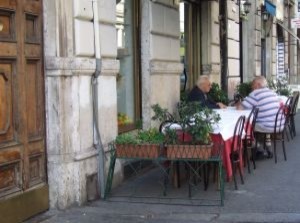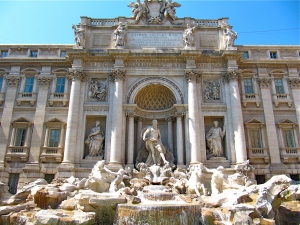Health & Safety – Things To Consider When Travelling With Kids In Italy
Posted on January 18th, 2014 by Anna in Uncategorized | No Comments »
While Italy is largely a developed country, especially in the big cities and the northern regions of the peninsula, there are also areas that are quite impoverished. Needless to say, you should always be careful traveling, no matter where. But if you’re traveling with children, it’s necessary to take extra precautions and stay safe and aware of your surroundings at all times. Here are a few thoughts to take into account specifically if you’re touring Italy with your family in tow.
Beware of the traffic. This goes mainly for Rome, but is applicable in the rest of the country too. Italians love speed and glamor, and this can translate to everyone driving like a maniac in the city where “life in the fast-lane” is literal. Always be sure to look both ways before crossing, and keep children at your side at all times—and if you value your life, never jaywalk.
Medical emergencies. The number to call in Italy – only in the case of an injury, not for general emergencies – is 118, (centodiciotto). Private hospitals in Italy are very good, but they can be expensive for the uninsured, so make sure your medical insurance covers you while abroad. Alternatively, you can be treated for free in public hospitals.
Stock up on medicines beforehand. What we’re used to as everyday, over-the-counter drugs can be hard to come by in Italian pharmacies. Even aspirin and cold medicine you will need to ask a pharmacist for, and all antibiotics need a prescription. Just to be safe, see that you bring the necessary amount of any painkillers or antibiotics that you or your family may need while traveling, because you may have trouble obtaining them while on the road. Furthermore, if you or your children have any allergies, such as penicillin, be sure to state that to the pharmacist or doctor before they prescribe you any medicines.
Beware pickpockets. While Italy is in general a safe country, as a tourist you will be the spotlight for thieves and other small-time criminals. (A family traveling with children is especially sure to draw attention.) To minimize risk in this aspect, always make sure your important documents are kept in a safe box back at the hotel, and that your credit cards and money are firmly tucked away in a money belt or inner pocket. Try not to flash expensive cameras or phones around while on the street, and be wary of distractions, which may be fabricated so someone can snatch your bag.
Avoid small, badly-lit roads. This is common sense for wherever you are, and it goes double for those traveling with children. If a road looks dark, secluded, and far off from the main stretch, don’t go down it – it’s better to be safe than sorry!
Overall, remember not to be intimidated by traveling in Italy and have a great time! It is far safer and easier to travel in Italy than in other places in Europe and the United States, and you’ll find locals to be friendly and helpful. That being said, you can best ensure that your trip goes smoothly by learning Italian before you go. Check out our different Italian courses, or send us an enquiry so we can get you started right away!






















